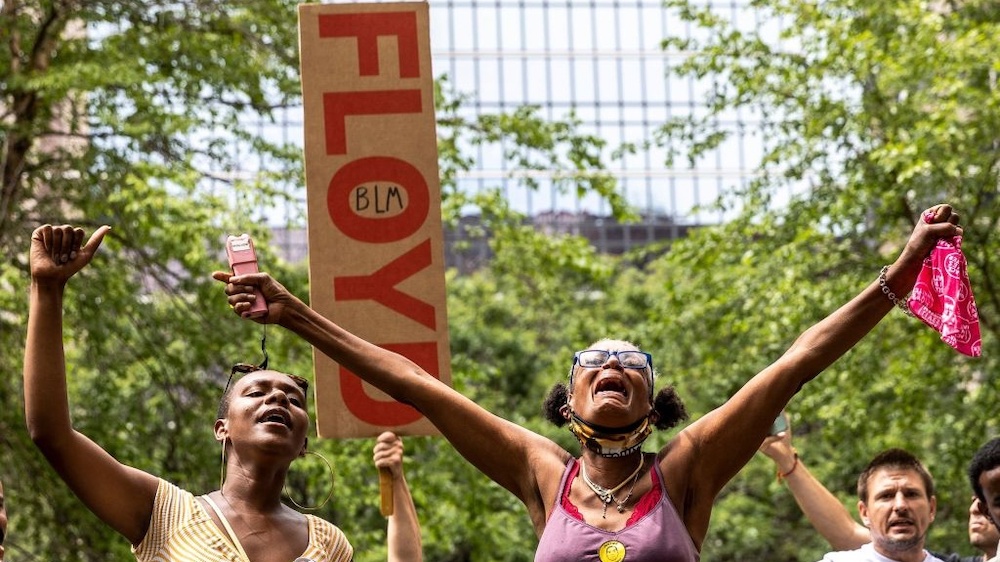If you’re interested in sharing your opinion on any cultural, political or personal topic, create an account here and check out our how-to post to learn more.
Opinions are the writer’s own and not those of Blavity's.
____
In 1965, John Lewis and hundreds of fellow activists walked across the Edmund Pettus Bridge in what led to Bloody Sunday, a gruesome act of police brutality and white supremacy. The violence shown on that day was said to be the catalyst for a turn in the civil rights movement. For the first time, millions of white Americans saw the gruesome system of segregation and the danger white supremacy poses to a large part of the American population. The televising of Bloody Sunday marked a turn in the civil rights movement. 56 years later, U.S. House Speaker Nancy Pelosi thanked George Floyd for “sacrificing” his life in order to push for racial justice.
Both of these situations outline how the loss and abuse of Black life have propelled social change. In 2021, Black people should not have to be sacrificed and abused to have our issues be addressed by society. To achieve justice for Black people, we as a country need to recognize not only Black trauma but the full spectrum of Black life and citizenship.
When we discuss the civil rights movement, we always uplift the martyrs but not the people. We know how the heroes died and labored, but not how they lived. If George Floyd — a man who was not an activist by choice — was alive, I believe he would have chosen to live and be a father to his daughter rather than to die at the hands of police brutality. I believe King and Malcolm X would have done the same.
In the same way Black trauma is commodified in the entertainment industry, it is also commodified in the practice of activism. Though showing Black pain and trauma have gotten us far, in 2021, after years of bloodshed, Black pain shouldn’t be the main driver for social progress. When we are only recognized when we experience pain, we lose what we are fighting for.
Every year, movies showing Black pain, sometimes in gruesome detail, are given critical acclaim. They are shown as real illustrations of American life and the reality of the society we live in. This trend is now growing in the field of activism where Black stories are being exploited for the grant dollars that come with affirming the white gaze. Black people should be able to share our stories and our traumas, but on our own terms, it should not be an expectation. One of the most important aspects of safety is the absence of exploitation. The goal should be building spaces to share and expand happiness. Our pain and trauma should not be only a means to an end.
When I sit in meetings with fellow organizers, many of whom are not Black, I sometimes confront the question of why I decided to become an activist in the first place. Seeing how the landscape has changed so much, I sometimes feel that part of what is expected of me as a Black man is to share stories of my experiences with racism and prejudice. To be fair, I have experienced racism and trauma and seen how insidious white supremacy is up close and personal. But I’ve also studied the field, theory and strategy of organizing intensely. However, when I answer with that, I often get the response to “go deeper,” as if my only means of authenticity is trauma, and that my only means to inspire is not the building of a skill and method, but rather overcoming said trauma.
As I grow into myself, I have now grown uncomfortable with sharing my trauma as a means to “go deeper.” I am an activist because I take pride in the work I do, the movements I support, and the people I help. When I am in these spaces I don’t feel like a man in the movement, but rather a tool to be used to forward it.
Ironically, the more internal work I do to heal from my trauma, the less I want to say it is the reason I work as an organizer. In fact, the more I heal personally, the better I become at what I do. I write better, I speak better and I grow a deeper appreciation for my work. When I started to overcome the trauma and the pain internally, I also started to find the love for the work I do. But upon sharing that, I often feel like my explanation does not suffice.
Because I am Black and an organizer, I must be in constant pain. As if it’s impossible to fight for social justice without hurting. Being Black and alive is already revolutionary, so why do we have to use trauma to authenticate my passion as an activist? Through this journey, I’ve come to realize that I don’t want to die as a tool of the movement but as a multi-dimensional man that loves and works for the people in it.
The goal of activism is to eventually reach a reality where no one has to die as an activist, but rather as a fulfilled person free from marginalization. In the struggle to find humanity and liberation, we need to make sure that we don’t dehumanize those and ourselves that brought us this far to merely become tools of the movement.
After hundreds of years of racial struggle, the white gaze still sees us as traumatized people who need to be saved — rather than human beings that deserve justice and fair treatment. Affinity places should be inclusionary and understanding of Black trauma, but also be a space that understands the full spectrum of the Black experience. We cannot market Black trauma while also ignoring Black strategy, skill and joy.
